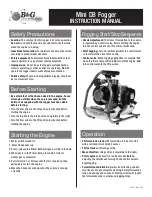
Material Safety Data Sheet
TITLE:
MSDS, HFC REFRIGERANT BLEND
TEMPTRONIC CORPORATION an inTEST COMPANY
Sharon, MA 02067
SHT 4 of 10
File: 17037BA
A17037 Rev. A
4
First Aid Continued
Skin Contact:
Flush skin with water for at least 15 minutes. Treat for frostbite if necessary by gently warming affected area. Seek
medical assistance for frostbite or if irritation is present. Wash contaminated clothing before reuse.
Eye Contact:
Immediately flush eyes with plenty of water for 15 minutes. Call a physician.
Ingestion:
Ingestion is not considered a potential route of exposure.
Notes to Physicians:
Because of possible disturbances of cardiac rhythm, catecholamine drugs, such as epinephrine, should be used with
special caution only in situations of emergency life support.
-----------------------------------------------------------------------------------------------------------------------------
Section 5 – Fire Fighting Measures
-----------------------------------------------------------------------------------------------------------------------------
Flammable Properties:
Flash Point:
No Flash Point
Flammable limits in air, % by volume.
LEL
:
Not
determined
UEL:
Not
Determined
Autoignition:
Not
Determined
HFC-236fa (“fe36”) is used as a fire extinguishant. Hazardous gas / vapor produced in fire is hydrogen fluoride.
Fire and Explosion Hazards:
Containers may rapture under fire conditions due to high pressure. Decomposition may occur.
Contact of welding or soldering torch flame with high concentrations of refrigerant can result in visible changes in the
size and color of torch flame. This flame effect will only occur in concentrations of product well above the
recommended the exposure limits, therefore, stop all work and ventilate to disperse refrigerant vapors from the work
area before using any open flames.
HFC-23 is not flammable in air at temperatures up to 100 degrees C (212F) at atmospheric pressure. However
mixtures HFC-23 with high concentrations of air at elevated pressure and/or temperature can become combustible in
the presence of an ignition source. HFC-23 can also become combustible in an oxygen enriched environment (
oxygen concentrations greater than that of air).Whether a mixture containing HFC-23 and air, or HFC-23 in an
oxygen enriched atmosphere become combustible depends on the inter-relationship of 1) the temperature, 2) the
pressure, and 3) the proportion of oxygen in the mixture. In general, this blend should not be allowed to exist with air
above atmospheric pressure or at high temperatures; or in an oxygen enriched environment. For example, this blend
should not be mixed with air under pressure for leak testing or other purposes.
















































